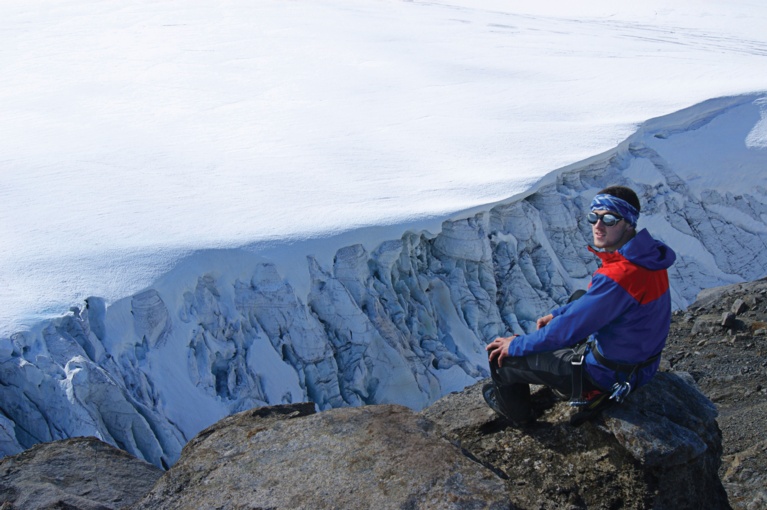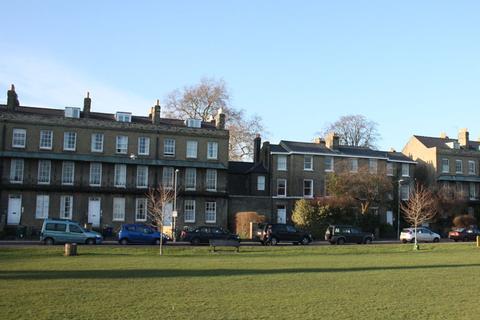Matthew – Science in the Arctic
When I was 19 years old, during a year out between school and university, I took part in a nine-week Arctic expedition to Svalbard. I am still teased relentlessly by friends for talking about nothing else, which in many ways is completely fair: it was a very formative experience for me.

Quite apart from an apparently endless supply of anecdotes though, the trip also instilled in me a strong desire to return to the Arctic at some point in the future. After two years at Emmanuel that desire was no less acute and I was lucky enough to have an opportunity come my way.
With the same organisation as before, the British Exploring Society (formally BSES), I was given the chance to go on a summer expedition to the far North of Norway as a ‘trainee’ leader. The trip would take place around the shores of Øksfjord (unfortunately it is pronounced much like Oxford), a north-facing sea-loch about two hours’ ferry ride from the nearest city. Luckily, despite sounding suspiciously as though it was named after our rival university, it was a fantastic location with dark, cold seas, surrounded by steep mountains and numerous glaciers and ice caps. Our expedition was based in a valley that drained the northern reaches of the Øksfjordjøkelen, the region’s largest ice cap at 42km2. For six weeks I helped to lead groups of up to 12 sixteen- to eighteen-year-olds in the mountainous environment as they learned Arctic survival and mountaineering skills. There was also a strong scientific element involved, with each group carrying out investigations in a specific discipline, for example glaciology or geomorphology.
My focus was botanical, in line with the plant sciences module I had studied as part of my Natural Sciences course in Cambridge. With the help of sponsorship from Emmanuel and the Scottish Rock Garden Club (SRGC), I employed the 70 members of our expedition to help carry out a survey of the flora of our locale, noting the variations that occurred with altitude, aspect and shelter. Slightly to my surprise the response was greeted with great enthusiasm; both Leaders and ‘Young Explorers’ took large numbers of photographs of all the plants they came across. The results too were far more varied and interesting than I had expected, with numerous species recorded and many that I was surprised to discover at such a high latitude: a product of the gulf-stream, no doubt. We also found trees that managed to grow high above the region’s tree-line, on the summits of the nunataks that protruded through the ice cap and its associated glaciers. This second finding was particularly interesting, given the recent speculation that it was in such environments that trees clung on in Northern Europe through the successive glaciations of the Pleistocene. Our findings at least give substance to that theory.
In addition to the science were the challenges of everyday life in the Arctic. The weather was changeable with wind, rain and snow a regular treat. That said, however, there were days with nothing but sunshine and astonishing views of the mountainous interior of the Finnmark Plateau. The ‘Young Explorers’ were quick to pick up the necessary camp craft and fitness and soon were keen to be climbing peaks and circumnavigating the ice cap. Having to re-supply meant that a weekly return to base-camp could not be avoided; there is only so much food that can be carried in amongst tents, ropes, pots, pans, hats and jumpers. Even so the quantity and variety of mountains in this part of the world meant that there was far too much to do and see even within ten miles of the campsite for anyone to get bored or restless.
The expedition lasted just six weeks and all too soon it was finished and we were travelling home. In terms of my personal development, it had been fantastic. I had been able to lead and instruct a very mixed group of teenagers in an extreme environment and hone my own mountaineering and Arctic skills at the same time. As with Svalbard, the experience left me with a hope that I would be able to venture north again at some point in the near future.
I am at a stage in life where people always ask me what it is that I plan to do after university. At 22, I have no idea. There seems at the same time too much opportunity and no way of knowing what the right path is. An involvement with the Arctic, however, is something that appeals greatly. It is not a straightforward line of work and can rarely provide full-time employment, but the rewards are rich, as long as snow, wind and the cold are not a turn-off.
I am grateful to Emmanuel for helping me in this enterprise for several reasons. The opportunity to carry out an ecological survey in the field is a useful experience for any aspiring scientist. The extent to which these projects must be planned and thought through in advance hits home. So do the many problems encountered in the field, and the difficulties in controlling all the variables to an extent that allows useful, scientific inferences to be drawn from the results. As well as this, Arctic/Mountain leadership has been a potential career option for me for some time. It is a hard world to break into and practical experience is almost the only way to prove one’s credibility. Finally, and perhaps most importantly, the intrinsic value of an experience such as this is enormous. Many friendships are formed, many challenges are overcome but ultimately it is just a fantastic chance to live in the wilderness. To camp out under the Aurora Borealis on top of an ice cap or climb into a glacial crevasse network is not something that many people get to do. Even the less romantic aspects, like teaching a sixteen-year-old how to use crampons and an ice-axe, or simply getting used to eating dehydrated ration packs for extended periods of time, have great appeal.
Regardless of where I am in five years’ time, these memories will endure and the desire to return to the Arctic will be no less strong. I just hope that for the sake of my friends I have found something else to talk about in the meantime.


